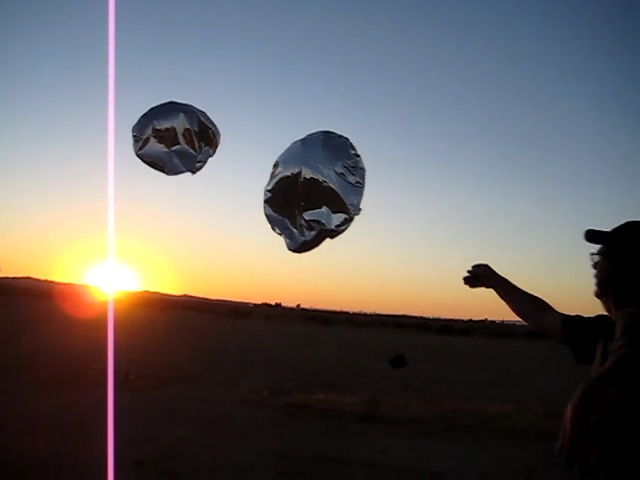|
|
LightAPRS is the most affordable, smallest, lightest, powerful and one of few open source APRS trackers available. It makes tracking pico balloons, weather balloons, model rockets, RC aircraft, and anything else that flies simple and easy. It is able to report location, altitude, temperature and pressure to the internet (APRS-IS) or direct to an amateur radio once a minute with a solar panel/super capacitors or just 4xAAA batteries. Because LightAPRS is open source you can add your own custom sensors via I2C/SPI pins. |
NOTE: This is the APRS-only version of the LightAPRS tracker. If you want the APRS+WSPR version, please see http://qrp-labs.com/lightaprs-w
Information, source code
Official information and source code is on GITHUB: https://github.com/lightaprs/LightAPRS-1.0
Key Features
- Ready-assembled PCB: all components are SMD and already soldered
- Open Source: Sofware is open. You can easily modify the source code. The source code is shared via GitHub for different use cases (pico balloon, HAB, car, etc.)
- Arduino Compatible CPU: Since CPU is Atmega based, you can use Arduino IDE and libraries to programme LightAPRS.
- Extendable: Using I2C and SPI pins you can add extra sensors ( and their librarires) to LightAPRS and programme it as you wish.
- 1 Watt Radio: In fact you don't need 1 Watt radio module for balloon projects but for your other projects you definitely will :)
- High Quality GPS: No need to comment :) Ublox is one of the best GPS manufacturers.
- Price: LightAPRS is more affordable (100$) than any other APRS tracker (see below)
Basic Features
- Software: Open Source
- Weight: 8 grams
- Dimensions: 3 cm x 5 cm
- IDE: Arduino
- Platform: MightyCore
- CPU: Atmega1284P-AU
- Flash: 128 KB
- Ram: 16 KB
- EEPROM: 4 KB
- Operating Frequency: 8 MHz
- Operating Voltage: 3.3V
- Input Voltage: 4.5V (min) - 10V (max) via USB or VBat pin
- BOD: 2.7V
- Sensor: BMP180 (pressure and temperature)
- Radio Module: Dorji DRA818V
- Radio Operating Frequency: 134-174 MHz (configurable by software)
- Low Pass Filter: Available (7 elements)
- Radio Power: 0.5W or 1W (configurable by software)
- Power Consumption (Sleep): ~5 mA
- Power Consumption (TX): ~460 mA (0.5W) / ~760mA (1W) (Automatically selected based on input voltage by code)
- GPS: Ublox MAX-M8Q (GPS-GLONASS)
- Gps Antenna Gain: 4.3dBi
- Extended Pins: I2C, SPI
- USB Serial: CH340G
Comparison with other APRS trackers
| LightAPRS | Tracksoar | PicoAPRS Lite | |||||
| Weight | 8 grams | 45 grams | 7 grams | ||||
| Frequency Agile | Yes (134-174 Mhz) | No | Yes (134-174 Mhz) | ||||
| Transmit Power | 1W | 300mW | 1W | ||||
| Softare | Open Source | Open Source | Proprietary | ||||
| Sensors Included | Temperature, Pressure | Temperature, Pressure, Humidity | Temperature, Pressure | ||||
| Extendable | I2C, SPI, GPIO | I2C, SPI, GPIO | No | ||||
| Price | 100$ | 205$ | 157$ |
Photos
History
Three years ago I was googling about high altitude balloons and I ended up with QRP Labs Balloon Flights page :) I was really impressed with Dave's (VE3KCL) efforts to circumnavigate around the world with party balloons and track them.
Six months later I got my amateur radio license and started flights with heavy APRS trackers. Since payload is very heavy, balloons maximum altitude never exceeded 9.000 meters.
Last year my friend Hakki (TA9OHC) said me "I can design and assembly a lightweight APRS tracker" and I said to him "Let's do it, but we should keep it simple, useful and user friendly". After one year hard working and testing "LightAPRS Tracker" is ready for launch :) And I don't know if it's a quirk of fate, I realised that Hans is living in my country and very close to my moms town :) I visited him and mentioned about our project and decided to collaborate.
Mustafa Tan
TA2MUN
https://picoballoon.ist
Pico-balloon launch by Brian N6CVO
See http://www.qrp-labs.com/lightaprs/n6cvo11.html for details


